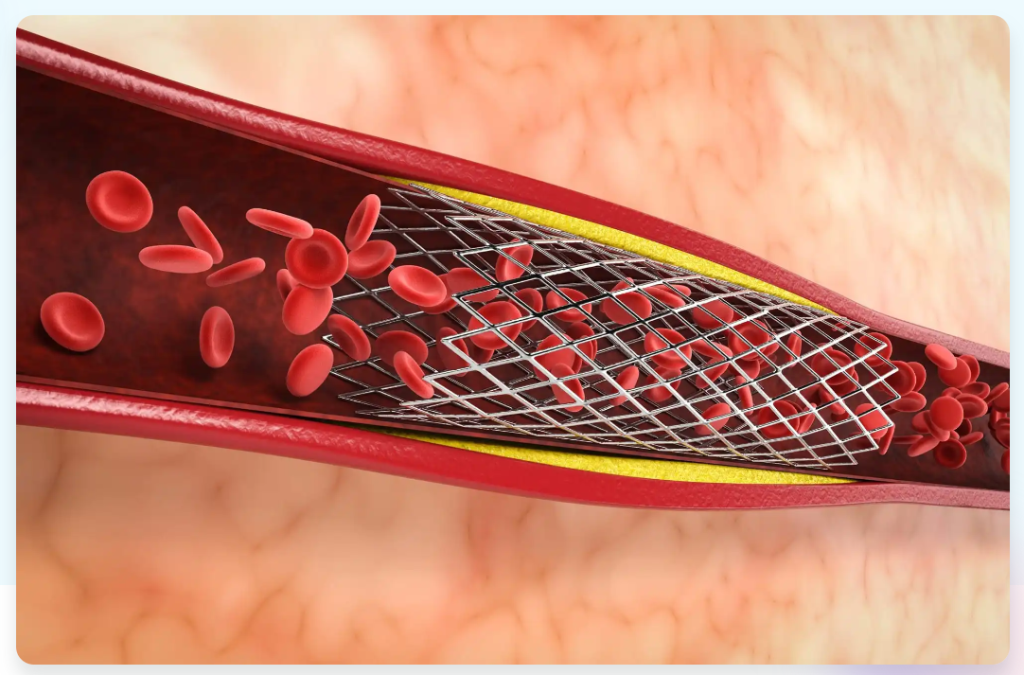Exploring the Gold Standard: A Comprehensive Guide to Invasive Angiography in India
In India, angiography is a minimally invasive diagnostic procedure that utilizes X-ray imaging in conjunction with a special contrast dye to obtain detailed images of blood vessels. This technique is valuable for medical professionals in identifying blockages, narrowed arteries, aneurysms, and other artery-related issues, particularly in areas like the heart (coronary) and legs (peripheral).

The procedure plays a crucial role in diagnosing and treating vascular conditions, offering precise visualization of blood vessels to guide effective medical interventions.
In this article, we’ll delve into the realm of angiography, encompassing its cost analysis, procedural aspects, diverse types, and more – so read on to explore further!
Varieties of Angiography Procedures and Associated Costs
Coronary Angiography:

A prevalent procedure employing X-rays to assess the health of your heart’s blood vessels, aiding in identifying blockages or narrowings indicative of coronary artery disease. Moreover, coronary angiography assists in planning treatments like angioplasty or bypass surgery. The cost of this procedure typically ranges from Rs. 25,000 to Rs. 60,000.
Cerebral Angiography:
A specialized X-ray procedure examining the blood vessels in your brain, facilitating the diagnosis of conditions such as stroke, brain aneurysms, and vascular malformations. The average cost in India typically falls between Rs. 24,800 and Rs. 40,000.
Renal Angiography:
A minimally invasive X-ray imaging technique visualizing the blood vessels of the kidneys, used to diagnose blockages or narrowing of the renal arteries affecting blood flow to the kidneys. The cost typically ranges from Rs. 15,000 to Rs. 30,000.
Pulmonary Angiography:
An X-ray imaging technique employing a contrast dye to examine the blood vessels in your lungs, aiding in diagnosing pulmonary embolism and guiding treatments. The cost in India varies between Rs. 20,000 to Rs. 35,000.
Hepatic Angiography:
A minimally invasive procedure utilizing X-ray imaging to examine the detailed anatomy of the liver’s blood vessels, facilitating the diagnosis of various liver conditions. The cost can vary but typically falls between Rs. 25,000 and Rs. 45,000.
Reproductive Angiography:
A procedure to examine the blood vessels in the reproductive system, aiding in identifying causes of female issues like fibroids and endometriosis. The cost typically ranges between Rs. 30,000 and Rs. 50,000.
Angiography Test Prices in Various Indian Cities:
CT angiography (CTA) is a non-invasive method of imaging that utilizes computed tomography to examine blood vessels. Conversely, conventional angiography involves an invasive procedure, necessitating the direct injection of contrast dye into blood vessels for visualization through X-ray.
The associated costs of angiography in India vary, typically ranging from Rs. 10,000 to Rs. 45,000. The specific pricing depends on the type and location of the angiography procedure. Below is a more detailed breakdown of the prices:
| CITY | CONVENTIONAL ANGIOGRAPHY (INR) | CT ANGIOGRAPHY (INR) |
| Bangalore | ₹25,000 | ₹12,000 |
| Hyderabad | ₹20,000 | ₹9,000 |
| Chennai | ₹25,000 | ₹10,000 |
| Mumbai | ₹35,000 | ₹15,000 |
| Gurgaon | ₹25,000 | ₹12,000 |
| Pune | ₹20,000 | ₹8,000 |
| Delhi | ₹20,000 | ₹8,000 |
Factors Influencing Angiography Costs in India:
Numerous factors influence angiography costs in India, including the type of angiography, choice of hospital/clinic, geographic location, doctor’s fees, room type and stay duration, pre-procedure tests, angiography technology, medications and supplies, medical insurance, additional procedures, post-procedure care, patient’s health condition, and negotiation skills.
When Might a Doctor Recommend Angiography?
A doctor might recommend angiography if there are signs of a blocked or narrow artery, unusual chest pain, a history of stroke or heart attack, or other health issues affecting the blood vessels.
Procedure for Angiography:
Angiography involves visualizing blood vessels in various body parts, typically to diagnose conditions like blockages or abnormalities. Before the procedure, a medical check-up, prep work, bloodwork, and informed consent are essential.
During angiography, patients undergo local anesthesia, catheter insertion, contrast injection, X-ray imaging, and monitoring. After the procedure, patients are monitored in a recovery room before going home with post-procedure care instructions.
Interpreting the Results:
Angiogram results provide valuable information for diagnosing and managing various vascular conditions, aiding in determining the best treatment plan, which could range from lifestyle changes to surgery.